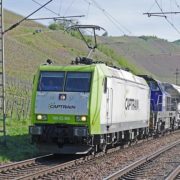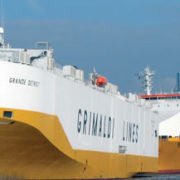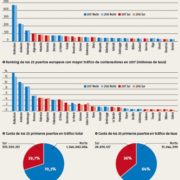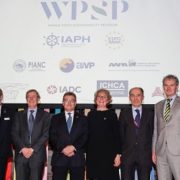Demand for SSS increases in the Atlantic and Mediterranean façades in 2017
The capacity offered in the Motorways of the Sea of the Atlantic facade has grown by 160%, while in the Mediterranean basin, the increase has been of 6%.
The Shortsea Promotion Centre of Spain has held a meeting of its Board of Directors in which the report of the Statistical Observatory of the Short Sea Shipping (SSS) in Spain for the year 2017 was presented.
The document demonstrated the growth of this type of transport along the Atlantic routes, with significant increases in terms of demand, and highlighted its recovery in the Mediterranean following the decrease of 2016. Specifically, the capacity offered for transport of road cargo in 2017 has grown by 32% in the Atlantic, and 8% in the Mediterranean.
However, although the number of lines offered has increased, the number of vessels used has been reduced. In the SSS alternative to road transport, the annual capacity offered in the ro-ro services has rebounded 42% in the Atlantic side, with 1.81 million linear meters, and 25% in the Mediterranean, with 4.13 million of linear meters.
With regard to the Motorways of the Sea, the capacity offered on the Atlantic side grew by 160% along the two motorways, while in the Mediterranean the increase has been of 6% along its three routes.
248 million tons
In total, short sea shipping transport in Spain has risen to 248 million tons in 2017, an increase of 6% over 2016, of which 19% correspond to domestic cabotage traffic and 81% to international traffic.
SSS of ro-ro cargo has risen by 8.1% to 21.1 million tons. It is important to note that on the Atlantic side the volume has been much lower, with 2.25 million tons representing an increase of 13.9%, than on the Mediterranean side which processed 15.25 million tons of cargo, 9.3% more.
In overall terms, in 2017 the average employment of the offer was 73.1%, a figure below the 80.1% registered in 2016. In the Atlantic side, it has been reduced by 53.3% due to a much higher growth of supply with respect to demand, while in the Mediterranean, employment has gone from 81.8% to 85.5%, for the same reason.
Source: Cadena de Suministro









